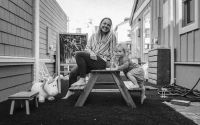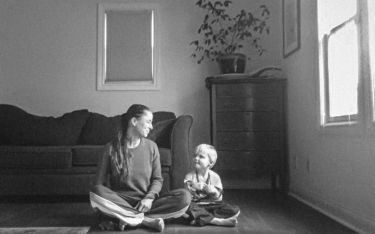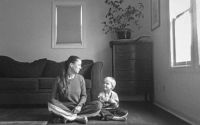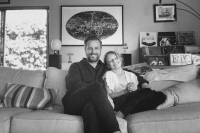Until recently, nobody had heard of SARS-CoV-2, the virus responsible for COVID-19, and certainly no Stanford labs were studying it. But, in just a few short weeks, researchers in disciplines ranging from biology and medicine to engineering and economics have marshaled their resources and expertise to help understand, track, stall and fight a pandemic that is swiftly sweeping the globe and leaving massive societal and economic distress in its wake.
The intense research focus around a single topic is utterly unique in the history of the university. “I’ve been here 27 years and I’ve never seen anything like this,” said Stanford biologist Tim Stearns. “But there’s also never been a situation like this in terms of disruption to campus and to our lives. We’re starting to see the creativity of Stanford researchers coming through.”
Even though the rapid spread of the disease was unexpected, Stearns is not surprised by his colleagues’ response to it. “I know from long experience that academics are intrinsically interested in doing things that contribute to the greater good,” said Stearns, who is the Frank Lee and Carol Hall Professor in the School of Humanities and Sciences.
Some of Stanford’s COVID-19 projects will have immediate payoffs, like devising tools that will speed the development of a vaccine. Others may not bear fruit for months or years – but they could plant the seeds for a fuller understanding of not only SARS-CoV-2, but the viral agents of future pandemics as well.
While there is no shortage of commitment and a resolve to help among Stanford’s community of scientists, tinkerers and scholars, the challenges associated with a large-scale pivot to studying COVID-19 are daunting. Some of the university’s infrastructure, intended to support collaboration and interdisciplinary thinking, is helping make the pivot easier, but the shift is requiring some groups to abruptly change course or quickly learn new technologies and research methods.
Unable to enter their labs, many researchers are also conducting their work from home – even as they cycle through feelings of anxiety, fear and frustration while simultaneously caring for themselves and their loved ones.
Here, some of the Stanford researchers working on COVID-19 projects speak about their professional and personal experiences during this unprecedented time. Each was photographed at home as they comply with California’s shelter-in-place order.
Photography by Andrew Brodhead. Video by Farrin Abbott, Kurt Hickman and Julia James.
Alia Crum
“We are hanging in there. Managing childcare of a toddler with two working parents and teaching two classes – one of which has over 500 students – isn’t easy, but stress is enhancing, I am told. We are finding both joy and purpose in the midst of the madness. I am grateful for my health and for members of my lab who are working tirelessly on these questions.
“I have spent my entire career studying how our mindsets shape our health. This crisis provided an opportunity to understand these mindsets more closely as they apply in an infectious diseases setting as well as the ways we can potentially leverage mindsets to improve health and well-being in the context of a pandemic. … Even if our research can’t immediately help the problem, it may prove to be essential for preventing and alleviating future crises.”
–Alia Crum, Assistant Professor of Psychology
Project: Exploring the influence of mindsets – core assumptions about the nature and workings of things within ourselves and the world – in shaping behavior, health and well-being during the coronavirus pandemic. More...
Collaborators: Lauren Heathcote, Rina Hori, Kari Leibowitz, Kengthsagn Louis and Sean Zion
Yong Suk Lee
“The world we end up with after this pandemic may likely be different from what we have known before. There is enough gravity in the situation to devote much of our research efforts into examining COVID-19 related topics.”
–Yong Suk Lee, Center Fellow at the Freeman Spogli Institute for International Studies
Project: Examining how governments have responded differently in incentivizing private companies, especially tech companies, to tackle COVID-19 and mitigate its impact. More...
Alexandria Boehm
“When we first heard about the outbreak in Wuhan in January, we started planning our work. I have been studying pathogens in the environment for almost 20 years, Krista has been working on disinfection of enveloped viruses for a while, and Craig has been interested in wastewater epidemiology, so it was a natural fit. We contacted our program manager at NSF and he encouraged us to submit a RAPID grant. At that time, it was not clear that the COVID-19 outbreak in China would be important to the U.S. Unfortunately, things took a turn for the worse. Although we are happy to have this grant to get us started on this work, we all would certainly exchange the funding for a different fate.”
–Ali Boehm, Professor of Civil and Environmental Engineering
Project: Sampling wastewater at water treatment plants for SARS-CoV-2, the virus that causes COVID-19, in order to gather insight about disease prevalence in a community and help inform public health decisions. More...
Collaborators: Craig Criddle, Suzy Kim, Nasa Sinnott-Armstrong and Krista Wigginton
Russ Altman
“Every day I am checking in with elderly parents in their 80s and children in their 20s/30s and a grandson who is 20 months old. It’s a constant concern, like everyone else. I feel lucky to be here with my wife in our house of 20 years. Other people are much more stressed and we think about them and feel for them constantly. The work helps me be distracted for many hours each day, and I am grateful for that, too.”
–Russ Altman, Kenneth Fong Professor and Professor of Bioengineering, of Genetics, of Biomedical Informatics Research, and of Biomedical Data Science
Project: Investigating currently available drugs that may be useful for treating COVID-19, with a particular focus on drug targets on TMPRSS2, a human protein that the virus binds to. More...
Nigam Shah
“It is time to ask the question of ‘How will we reopen society and keep it functioning till a treatment or a vaccine is found?’ We need to move beyond hyperventilating headlines about ventilators and focus on our strategy to respond long term.”
–Nigam Shah, Associate Professor of Biomedical Informatics and of Biomedical Data Science
Project: Continuously profiling patients screened for SARS-CoV-2 by using anonymized data to watch trends in presenting symptoms of patients, test positivity rates, the age distribution of positive cases and hospitalization rates as well as monitor length of stay. Another effort involves helping other faculty obtain more accurate, higher-resolution estimates of the parameters that feed into their computer models of the COVID-19 pandemic. More...
Johannes Eichstaedt
“This is the biggest challenge of our time – if we as social scientists don’t work on this and try to contribute meaningfully, then what are we doing?”
–Johannes Eichstaedt, Assistant Professor of Psychology
Project: Combining large-scale analyses of Twitter with machine learning to better understand how COVID-19 is experienced across the U.S. over time and measure levels of depression, subjective well-being and loneliness in the population, with a focus on detecting meaningful changes in these variables for communities.
Stanley Qi
“I don’t think there will be one solution or treatment. A good analogy is the 1918 flu. People tried to attack the problem from many different angles – industry, biology, engineering. Most of them failed, but those efforts significantly promoted science and research into infectious disease. We’re seeing a similar rallying of the scientific community around COVID-19 now. If we all come together, maybe we can find solutions, not only for COVID-19, but for future outbreaks as well.”
–Stanley Qi, Assistant Professor of Bioengineering and of Chemical and Systems Biology
Project: Using the gene-editing technology CRISPR to find a genetic approach to directly recognize and eliminate the COVID-19 virus from human cells. More...
Wah Chiu
“My wife and I belong to the high-risk age group. We are following the social distancing and shelter-in-place orders of our city. This is the first time in decades that I have not gone to my lab on the weekend or traveled out of town on a business trip. As a result of the stay-at-home orders, I am much busier than ever. Working remotely has been a challenge to achieve all that needs to be done at this time. My two daughters and their family in Houston and Washington, D.C., are safe and healthy, and I have reconnected with some of my relatives and friends around the world. This is certainly a time for us to stay connected and support each other.”
–Wah Chiu, Professor of Photon Science at SLAC National Accelerator Laboratory, of Bioengineering, and of Microbiology and Immunology
Project: Using cryo-electron microscopy (cryoEM) and tomography (cryoET) at SLAC to study the coronavirus, including its molecular components, how it interacts with and infects cells, and potential targets for drugs or antibodies. More...
Manu Prakash
“Many people are working on the first 90 percent of every problem. What’s hard is the last 10 percent, which is clinical validation. The DIY community is not used to this part. If people want to help, they can replicate our efforts – and they can share their replicated data. Together, we can cover that last 10 percent.”
–Manu Prekash, Associate Professor of Bioengineering
Project: Repurposing of full-face snorkel masks as reusable personal protective equipment (PPE) for healthcare workers. More...
Cheryl Phillips
“We have been collecting, processing and releasing data sets that journalists can use in their coverage of the pandemic. This includes data on hospital beds, associated demographic data, vulnerable communities and nursing home data.
“So far, we have created seven open projects for journalists. One group of students is supporting an updating map of food support for those in need, for example. Another group of journalism professors from universities around the country and their students is working on collecting data related to university responses to the pandemic.”
–Cheryl Phillips, Lecturer in Communication and Director of Big Local News
Project: Big Local News is a collaborative effort and data-sharing platform for journalists that is collecting, processing and releasing data sets that journalists can use in their coverage of the pandemic.
Ian Gotlib
“We wanted to characterize the unique experiences of pregnant women and new mothers during this unprecedented global event.
“Our goal is to follow these women and their infants, either online or in person, to examine the possible impact of this exposure on maternal and infant psychological health.”
–Ian Gotlib, David Starr Jordan Professor of Psychology
Project: Recruiting a cohort of pregnant women and new mothers to gather information concerning their experiences with and feelings about the pandemic, including how the pandemic is affecting labor and delivery.
Erin Mordecai
“What it feels like right now is that we’re living through a major pandemic that is something on a magnitude that we haven’t seen for decades or maybe a century. To be sitting here and working in this field but not doing anything and ignoring COVID-19 seemed very silly, so my lab started thinking about what might we be able to do that is most useful.”
–Erin Mordecai, Assistant Professor of Biology
Project: Using computer models to evaluate the effectiveness of non-pharmaceutical interventions such as social distancing to slow the spread of the disease and prevent a resurgence. More...
Calvin Kuo
“COVID-19 is a contagion that threatens everyone on the planet. We quickly realized that our lung organoids would allow the study of SARS-CoV-2 infection in human cells and immediately got busy. We had already been using the lung organoids to study stem cells and to infect them with influenza virus H1N1 … so it was not a huge leap to want to study SARS-CoV-2.
“Our hope is to infect these human organoids with SARS-CoV-2 virus to better understand how the virus infects human cells, stimulate an immune response and create a system to test new therapeutics.”
–Calvin Kuo, Maureen Lyles D’Ambrogio Professor in the School of Medicine
Project: Recreating the SARS-CoV-2 infection in three-dimensional human mini-organs, or “organoids,” to investigate details behind how the virus infects human lung and intestinal tissues.
Collaborators: Manuel Amieva, Ralph Baric and Catherine Blish
Marshall Burke
“My own personal carbon footprint is, I think, going to be down about 80 percent this year relative to last year given all the travel canceled. And as a person who studies climate change, that’s actually a really good outcome. So, personally, I hope the things we have been forced to experiment with here will lead to changes in our own personal behavior.”
–Marshall Burke, Assistant Professor of Earth System Science
Project: Calculated that the reductions in air pollution in China caused by this economic disruption likely saved 20 times more lives in China than have currently been lost directly due to infection with the virus in that country. More...
Jeff Hancock
“We really want to help people to engage in social distancing as it seems to be best way to address the pandemic. To do that we need to understand why people are not complying, and by doing that we can design better messaging and policies.”
–Jeff Hancock, Harry and Norman Chandler Professor in Communication
Project: Assessing the U.S. public’s experience with the COVID-19 crisis during the period when shelter-in-place orders were widely implemented to understand non-compliance with those orders, and to compare non-compliance across age categories associated with different levels of risk. More...
Collaborator: Eleni Linos
Tina White
“I started paying attention to the news on coronavirus toward the end of January. I had a lot of sleepless nights and felt pretty helpless about what was happening in China, and what could happen all over the world. How many people were going to get sick. How many people were going to die. How many people were in an unprecedented quarantine.
“Then I saw an article about China’s app. This functional, but also hugely privacy invasive, authoritarian app. I wanted to stop something like that from happening here, so I started this effort to develop an effective intervention that also respects people’s civil liberties.”
–Tina White, Graduate Student in Mechanical Engineering
Project: Covid Watch, a smartphone app that uses Bluetooth technology to anonymously identify individuals who have tested positive for COVID-19 and alert others with whom they’ve recently crossed paths. More...
Collaborators: Rhys Fenwick, Julie Parsonnet and James Petrie
Neera Ahuja
“Residency did not prepare any of us as physicians for this. The reality is, when a community or the world faces a pandemic like this, you jump in and you figure it out.”
–Neera Ahuja, Clinical Professor, School of Medicine
Project: Conducting a randomized, double-blind, placebo-controlled phase 3 trial to evaluate the safety and efficacy of the antiviral drug Remdesivir in hospitalized adult patients diagnosed with COVID-19.
Collaborator: Kari Nadeau
Thomas Weiss
“In the face of the current situation, I think it is important and justified to seek any kind of information and expertise and mobilize resources to help us to get through this.
“We aim to understand why SARS-CoV-2, the coronavirus responsible for COVID-19, is so hyperinfectious, and why it induces so much inflammation, which is one of the principal reasons for its lethality.”
–Thomas Weiss, Senior Research Engineer at SLAC National Accelerator Laboratory
Project: Combining synchrotron experiments, machine learning-aided analysis and in-vitro studies to test methods for inhibiting both infection and inflammation by SARS-CoV-2. More...
Collaborators: Jamie de Anda, Rich Gallo, Melody Li, Victor Nizet, Gerard Wong and Yue Zhang
Marc Salit
“I’ve been a measurement scientist for my whole career – I’ve seen communities come together to advance science and technology when we made the right standards available, which is usually something best done as a community. I’ve led projects to do this in chemistry and in genomics, and when I reached out to colleagues in the CDC, FDA, and across the professional societies and trade groups to explore this, I found that we could be useful as a coordination solution.”
–Marc Salit, Senior Staff Scientist, SLAC National Accelerator Laboratory
Project: Developing a Coronavirus Standards Working Group to catalog and develop standards and inter-lab and inter-assay studies that will provide a global COVID testing enterprise. More...





























